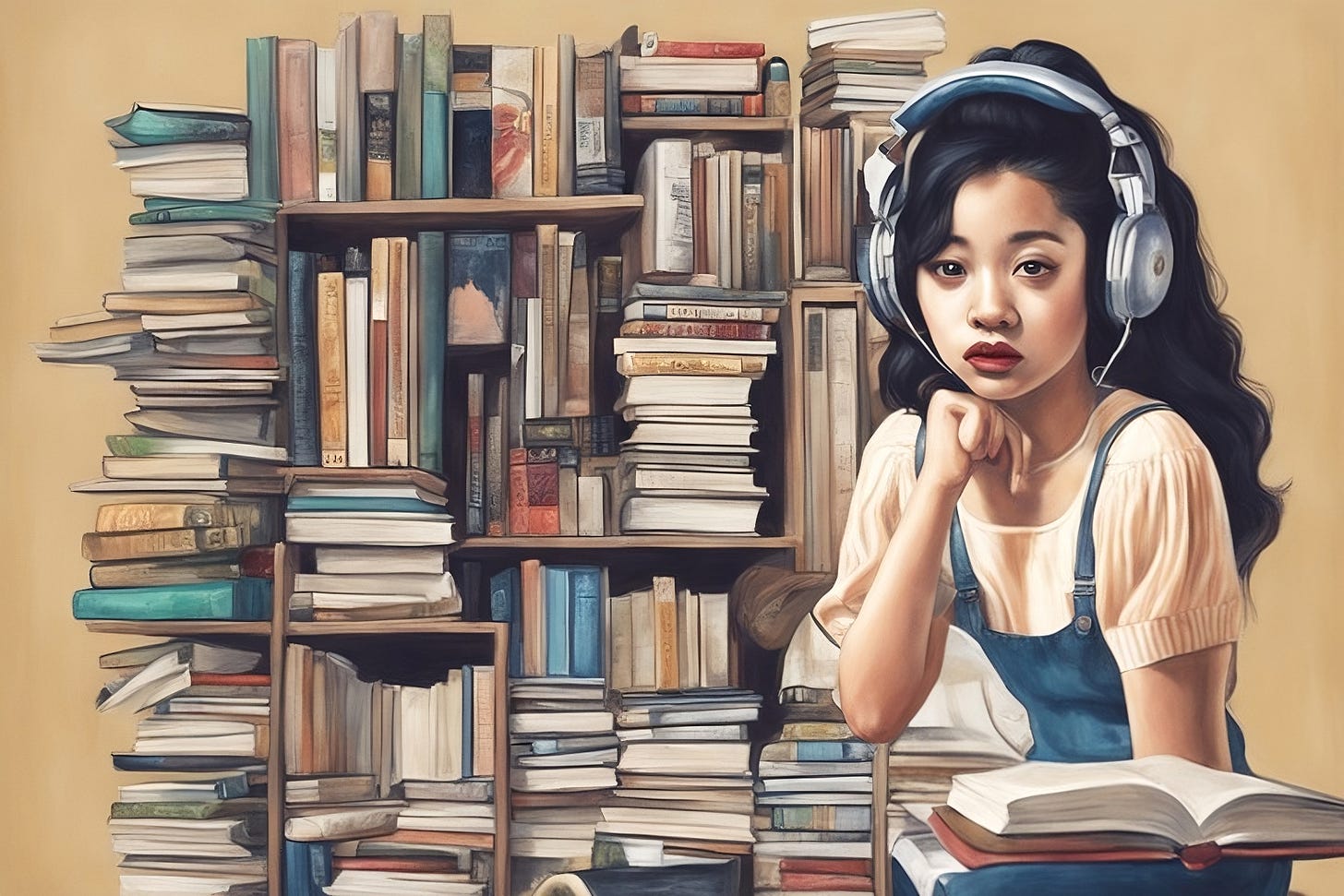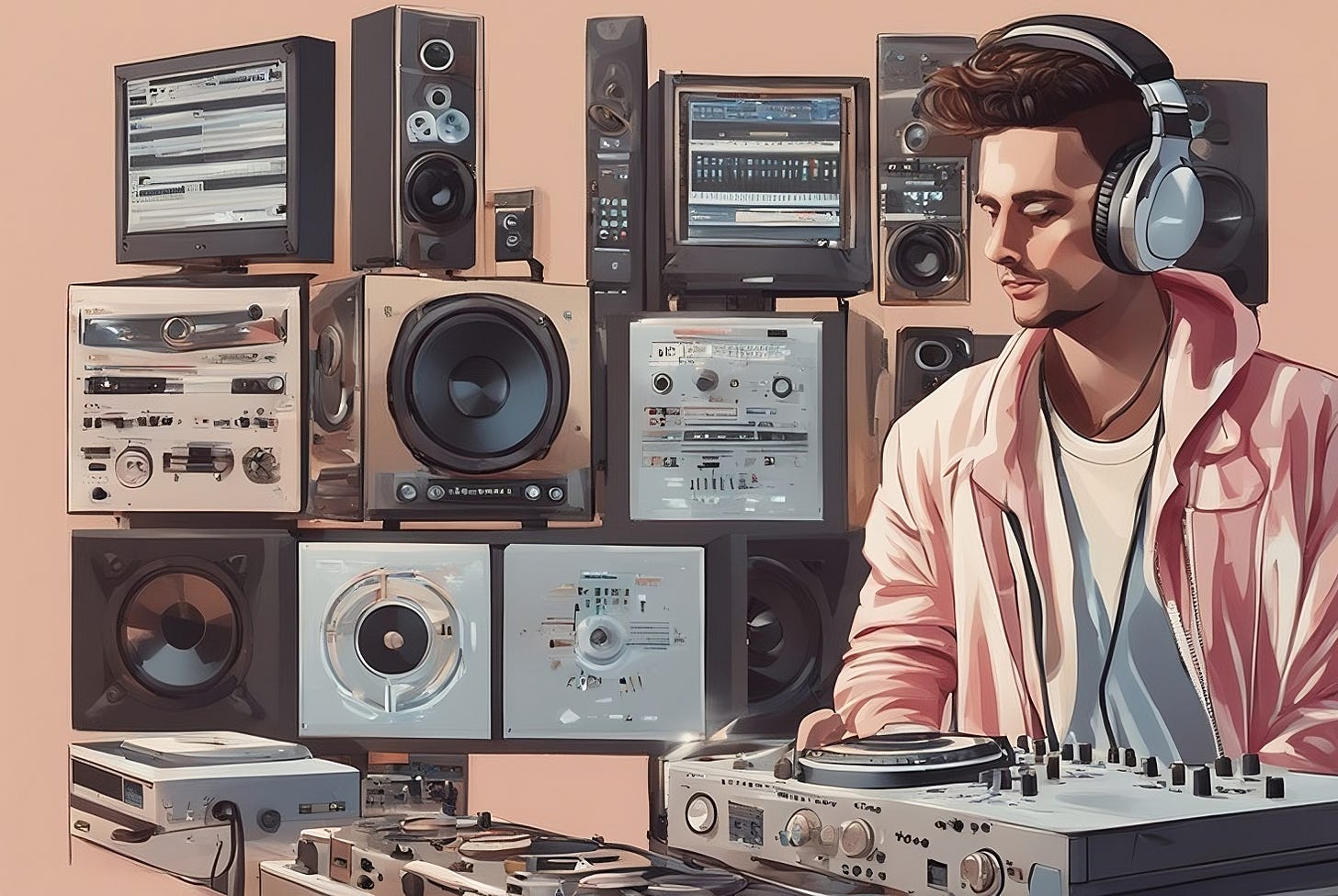In the 15th century, the printing press revolutionized the world. Much like how the digital transformation is changing the world today. Before Gutenberg's invention, books were handwritten by monks, limiting knowledge and culture to a select few. With the printing press, information became more accessible, leading to the democratization of knowledge. Books were no longer for the elite. With the Protestant Reformation, people began reading and interpreting religious texts on their own.
We have undergone a transformative leap in the digital age. We have shifted from passive content consumption to a dynamic Read/Write (RW) culture where everyone creates and consumes. This has led to a surge of user-driven content (and now AI content) that challenges copyright. Comparing this to the Reformation, we ask if this will cause a profound societal transformation. Could there be another leap on the horizon with the introduction of Read/Write/Own (RWO) culture?
Read-Only (RO) Culture: A Historical Perspective
At its core, Read-Only (RO) culture is about consumption without creation or modification. It's characterized by a unidirectional flow of content, where producers create and consumers passively absorb. There’s no feedback loop or platform for consumers to modify or remix what they're consuming.

Examples of Pre-Digital Era Content Consumption
Broadcast Television: Viewers could only watch what was scheduled. There was no way to interact with the content, let alone edit or redistribute it.
Print Media: Newspapers, magazines, and books were consumed as-is. Readers had no platform to edit the written content and republish it. Letters to the editor are curated and controlled while allowing a modicum of interaction.
Radio: Similar to broadcast television, radio was an RO medium. Listeners tuned in to what was being played without any real-time feedback mechanism.
Film: Movies are being watched in theaters, and audiences had no opportunity to alter or remix their viewing content.
Advantages and Limitations
Advantages
-
Consistency: With a limited number of creators and a streamlined distribution process, consumers knew exactly what to expect.
-
Centralized Control: It was easier for creators and distributors to maintain the integrity of their content. There was less risk of unauthorized alterations or reproductions.
-
Clear Revenue Streams: Producers could easily monetize their content, knowing that it was the primary source of consumption without widespread unauthorized replication.
Limitations
-
Lack of Interactivity: Consumers didn't have the tools or platforms to interact with content, stifling potential creativity and innovation.
-
Barriers to Entry: Without digital tools, producing content often requires significant resources, limiting the number of content creators.
-
Limited Feedback: Content producers had fewer opportunities to gather real-time feedback, which could hinder the development and improvement of content.
Rise of Read/Write (RW) Culture
Read/Write (RW) culture represents an environment in which individuals are active participants rather than passive consumers. It is characterized by a two-way flow of content where people both consume and create, remix, and redistribute, blurring the boundaries between professional creators and everyday internet users.

Examples of RW Culture in Action
-
Blogs and Vlogs: Platforms like WordPress and YouTube allow individuals to publish their thoughts and ideas to wide audiences. Without the need for traditional media outlets.
-
Social Media: Platforms like META, Reddit, TikTok, and Twitter empower users to create, share, and react to content in real-time.
-
Wikis: Websites like Wikipedia exemplify collaboration, where information is not just consumed. It can be edited and added by users worldwide.
Advantages and Limitations
Advantages
-
Democratization: Anyone can be a creator. This leads to a vast and diverse pool of content, representing voices that may have previously been marginalized.
-
Real-time Feedback: Content creators can get instant feedback, allowing for agile adjustments and iterative improvement.
-
Community Building: RW platforms foster tight-knit communities around shared interests, providing support and collaborative growth.
Limitations
-
Information Overload: The volume of content can lead to saturation, making it difficult for quality content to stand out.
-
Potential for Misinformation: The ease of creating and sharing content can sometimes lead to the spread of unverified or misleading information.
-
Copyright Issues: The remix culture can lead to challenges in distinguishing original content from modified versions, raising potential legal concerns.
Emerging from the rich soil of RW culture, where everyone moved from being a mere consumer to an active participant, we witnessed a major shift in the way culture was created and enjoyed. The tools and platforms that made it easy for anyone to create and modify content laid the groundwork for a more complex and dynamic landscape. It wasn't just about creating original content, it was about reinventing, reinterpreting and sharing existing content in new and interesting ways. The RW culture's focus on collaboration and remixing opened the doors to a particular phenomenon that is deeply rooted in the digital age: memes and remixes.
Definition and Importance of Memes and Remixes
At the core of digital culture are memes and remixes. Memes are units of cultural information that spread rapidly, often in the form of humorous images, videos, or text. Remixes involve taking existing content and adapting or combining it to create fresh new content out of it. Both memes and remixes are similar when it comes to reusing content and they serve as powerful modes of communication in the digital era. They can convey ideas, express emotions, provide social commentary, and even challenge established norms. Moreover, they are easily consumable and shareable. These forms of expression are significant because they represent a democratized, dynamic, and mass-influenced evolution of cultural expression.
2. Examples of Popular Memes and Remixes, and Their Origins
-
Meme: "Two Buttons": Originating from a comic strip, it showcases a character faced with pressing one of two buttons, each representing a conflicting choice. This meme has been adapted to fit countless situations, depicting internal dilemmas.
-
Meme: "This Is Fine": From a comic by KC Green, it depicts a dog in a room on fire, remaining calm. It's widely used to express resignation in the face of a chaotic situation.


-
Remix: The "Harlem Shake": Starting with a 2012 track by Baauer, internet users began creating videos with a single person dancing, followed by a jump cut to a group dancing wildly. This format was replicated by countless groups, from offices to sports teams.
-
Remix: Songs in "Nightcore" style: Original tracks are sped up, and pitch is increased, transforming them into energetic versions that have gathered their own following on platforms like YouTube.
The Organic, Viral Nature of Meme Spread and Its Challenge to Traditional Content Control
Memes and remixes have a viral nature, spreading organically through online communities. Often at a pace that's difficult to predict or control. The reasons for their rapid spread include:
-
Their relatable and universal appeal which often transcends linguistic and cultural barriers.
-
The ease of sharing and resharing on social media platforms.
-
Their ability to evolve and adapt to fit various contexts, increasing their relevance to different groups.
The fast and widespread spread of memes and remixes challenges the usual way of controlling content. In the past, media was controlled and distributed through regulated channels. However, memes and remixes break these norms. They can come from anywhere, be changed without limit, and be shared across borders and platforms with little control. This creates challenges, especially when it comes to copyright laws, making money from content, and determining if information is true.
Current Copyright Law: Not Fit for the Digital Age

Copyright law has its roots in the desire to encourage the creation of art and culture by granting creators exclusive rights to their works. , These laws provided a balance between the interests of creators, who wanted to profit from their creations, and the public, who benefited from access to this work. Essentially, copyright aimed to:
-
Promote creativity and innovation by ensuring creators could benefit financially from their works.
-
Allow creators to control how their works are used and distributed.
-
After a designated time, ensure these works entered the public domain, enriching culture.
The Doctrine of "Fair Use" and Its Complexities
"Fair use" stands as a pivotal exception within copyright law. It allows for limited usage of copyrighted material without the need for permission. It is used for criticism, comment, news reporting, and education. But navigating its waters is complex. Its usage is subjective, often leading to inconsistent decisions in legal settings. Even when a use appears transformative or nonprofit in nature can still be labeled as infringement.
Real-world Cases Where Meme/Remix Creators Faced Legal Issues
-
Richard Prince and Instagram Photos: Artist Richard Prince is known for his rephotography. He takes screenshots of Instagram photos, makes minor changes, and then sells them as artwork for large sums of money. Several of the original photographers were considering legal action. The case sparked debates about the boundaries of art and remix culture.
-
Pepe the Frog Memes: The creator of Pepe the Frog, Matt Furie, took legal action against several entities for using Pepe without permission. This raised questions about the enforcement of copyright in the ever-evolving world of memes.
In the face of rapidly evolving digital culture, driven by RW practices, traditional copyright laws seem increasingly out of step. The challenges they present underscore the need for a legal framework that can adequately address the nuances of our digital age.
Towards a Balanced Digital Future: Licensing, Ownership, and the Evolution of Content
As we've seen, traditional copyright laws often grapple with the dynamic landscape of the digital age. However, there are avenues that suggest a way forward. For example, flexible licensing models like Creative Commons offer different levels of permissions. But beyond individual licenses, there's a need for adjustments to copyright laws. Such adjustments would aim to recognize the nuances of digital culture. A more balanced approach doesn't just benefit creators. It holds economic and cultural dividends, enriching public domains.
The RW culture evolved from mere consumption and creation to one where ownership is pivotal. This Read/Write/Own (RWO) culture encapsulates the idea that creators don't just generate and share content. They have unequivocal ownership rights over it. Enter blockchain and NFTs. Digital assets can be "minted" on blockchains, providing provable, unique ownership of digital content, be it art, music, or even a tweet. This concept of digital ownership offers lots of benefits. For creators, it provides a new avenue for monetization and control. For consumers, it ensures authenticity and a direct connection with creators.
Looking ahead, it's possible that the next phase of our digital evolution will be one in which content and ownership are inextricably linked. Imagine a world where every piece of digital art, every song and every meme carries a unique signature of ownership that is traceable and undeniable. This not only offers economic benefits, but also changes the very nature of digital content consumption.